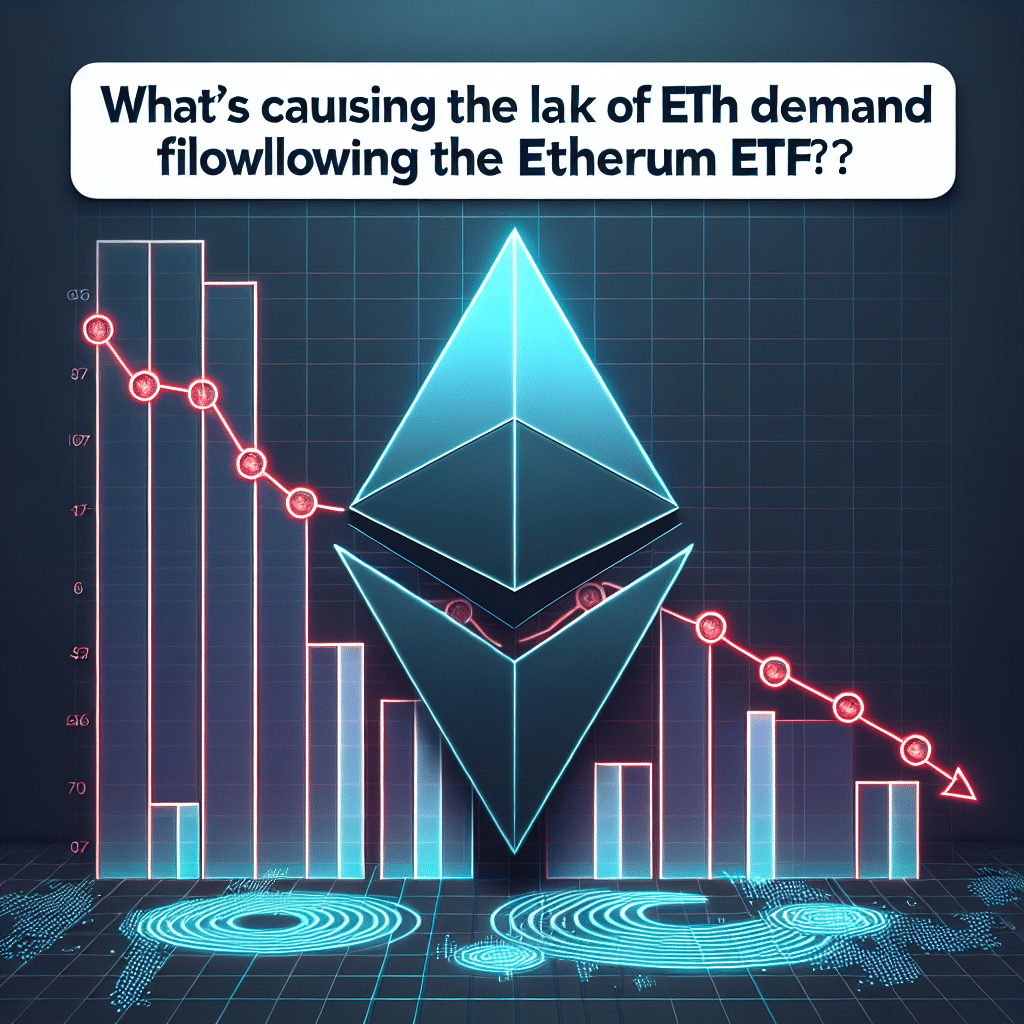Table of Contents
The Ethereum Market Dilemma: Examining the Struggle Despite ETF Launches
Ethereum (ETH), a leading cryptocurrency second only to Bitcoin in terms of market capitalization, has faced a tumultuous month. Despite the highly anticipated launch of spot Ether exchange-traded funds (ETFs) in the United States, Ether is poised to conclude July in the negative territory. This downturn comes as a surprise to many, considering the 9% drop that followed the debut of these ETFs on July 23. Currently, ETH stands at a 4.05% decrease since the introduction of the ETFs, indicating other underlying factors at play influencing its market performance.
ETHE Encountering Heavier Withdrawals than GBTC
One of the remarkable observations in the current landscape is the faster rate of outflows from Grayscale’s Ethereum Trust (ETHE) compared to its Bitcoin Trust counterpart post the launch of spot Bitcoin ETFs. Analysis shows a sharp contrast in asset management dynamics, with ETHE undergoing significant sell-offs.
-
ETF Inflows and Outflows: Data reveals a stark difference in the net inflows of spot ETH ETFs, showcasing cumulative total net inflows at a negative $439.64 million. Interestingly, while Grayscale encounters most of the selling pressure, other entities like BlackRock, Bitwise, and Fidelity’s products have marked positive daily inflows.
- GBTC vs. ETHE: Both investment products have noted asset losses since their conversion, hinting at a broader trend influencing the crypto investment vehicles landscape.
Analysts speculate that the massive outflows from ETHE might decelerate in the upcoming week, potentially stabilizing the situation to some extent.
Diminished ETH Exchange Demand
A significant factor contributing to ETH’s downward trajectory is the alarming decline in exchange withdrawal transactions since March. This metric, closely linked with price movements, indicates a mounting disinterest or lack of demand for ETH on exchanges.
- Estimated Leverage Ratio (ELR): The ELR has been pinpointed as a key driver behind ETH’s volatile price action during this period. A high ELR suggests that futures and perpetual contracts are influencing price movements, leading to a potentially unstable market condition. Expert advice leans towards a cautious approach to buying amid these indicators.
Further compounding the issue is the Coinbase Premium Index for ETH shifting into negative territory in the second quarter of 2024. Previously, an upsurge in this index correlated with increasing spot demand and bullish price actions. However, the current negative index underscores a dwindling buying pressure from US investors on Coinbase, exacerbating the demand issue.
Trading and Investment Implications
The interplay between Grayscale’s ETHE outflows, the diminishing exchange withdrawal transactions, and the negative Coinbase Premium Index highlights a complex ecosystem affecting ETH’s market performance. These elements combined suggest a cautious or bearish outlook for Ether in the short to medium term.
-
For Investors: The current market analysis advises caution, especially for those considering spot buying of ETH. Monitoring the ELR and exchange withdrawal transactions might offer insights into immediate market directions.
- For Traders: The volatility and the mentioned indexes provide a nuanced landscape for trading strategies. Those with a higher risk tolerance might find opportunities in short-term price movements influenced by ETF dynamics and exchange demand fluctuations.
FAQ
Q: Why is Ether’s price dropping despite the launch of spot ETFs?
A: Ether’s price drop is attributed to a mix of factors including faster outflows from Grayscale’s Ethereum Trust, a decline in exchange withdrawal transactions indicating low demand, and a negative Coinbase Premium Index suggesting reduced buying pressure.
Q: What is the Estimated Leverage Ratio (ELR)?
A: The ELR is a metric that reflects the ratio of open interest in futures contracts to the balance of exchanges. It helps gauge the influence of futures and perpetual contracts on the price action of a cryptocurrency.
Q: Can the negative trend for Ether reverse soon?
A: While a reversal is always possible, current indicators suggest a cautious outlook. Monitoring key metrics such as ETHE inflows/outflows, ELR, and exchange withdrawal transactions can provide early signs of any potential reversal.
Conclusion
Ether’s market position is undoubtedly facing challenges, underscored by the underwhelming response to the launch of spot ETFs, Grayscale’s outflow dynamics, and deteriorating demand on exchanges. For investors and traders alike, the current climate demands careful analysis and a cautious approach to navigating the volatile Ethereum market. As the crypto landscape continues to evolve, staying informed and adaptable will be key to identifying opportunities amidst the complexities.
For further reading and detailed statistics, visiting authoritative sources such as SoSoValue for ETF tracking or CryptoQuant for in-depth analytics on exchange metrics can provide additional insights.
